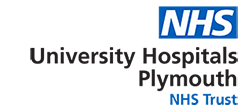Total Knee Replacement (TKR) Class
Date issuded: December 2023
Review date: December 2025
Ref: C-116/Physiotherapy/LC/Total Knee Replacement Class v3
PDF: Total knee replacement final December 2023 v3.pdf [pdf] 481KB
After surgery, an exercise program will help you return to daily activities and help restore the function of your knee.
This is a specific program that provides a wide range of exercises that are safe for you to do.
STRENGTH:
Strengthening the muscles that support your knee will reduce stress on your knee joint and help with your walking.
FLEXIBILITY:
Stretching the muscles that you strengthen is important for restoring range of motion. Gently stretching after strengthening exercises can help reduce muscle soreness.
Target Muscles:
The muscle groups targeted in this conditioning program include:
-
Quadriceps (front of the thigh) to straighten the knee
-
Hamstrings (back of the thigh) to bend the knee
-
Abductors (buttock) bring the leg out to the side
-
Adductors (inner thigh) bring the leg back to the centre
Length of programme:
This knee conditioning program should be continued for 4 to 6 weeks, unless otherwise specified by your physiotherapist.
After your recovery, these exercises can be continued as a maintenance program for the health of your knees. Performing the exercises two to three days a week will help maintain strength and range of motion in your knees.
Should I use pain control?
Pain killers can allow you to tolerate discomfort and help keep your knee moving. It is better to take your painkillers regularly rather than waiting until the pain worsens. Do not take more than the prescribed medication. Consult your GP if you would like any advice about your pain relief.
Your knee may be swollen and hot for some time after surgery and exercise. This is very common and can be addressed with regular use of ice on your knee joint. It is recommended wrapping something cold in a towel and placing this on your knee for twenty minute periods, with twenty minutes rest after. This can be repeated for comfort.
Guidance
-
Controlled physical activity/exercise has many health benefits and few dangers, and very few people are too old or infirm to benefit, but you need to remember the following.
-
Always ensure you are stable and safe when doing any exercise.
-
Start a new exercise slowly and cautiously.
-
Progress slowly, gradually increasing the time, frequency and intensity of the exercises, doing a little more each week.
-
Exercise is not a cure for knee pain. You are likely to continue to have (unexplainable) episodes of pain; during these times you should rest and reduce activity until the pain subsides.
-
If an activity causes prolonged pain, discomfort or swelling lasting for more than a couple of days or that wakes you at night, rest for a couple of days.
-
As the pain settles resume exercising gently, gradually building up the exercises as before but leaving out any specific activities that caused pain or adding them cautiously.
Leg Extensions
Main muscles worked
Quadriceps
-
You should feel this exercise at the front of your thigh
-
Sit up straight on a chair or bench.
-
Tighten your thigh muscles and slowly straighten and raise your affected leg as high as possible.
-
Squeeze your thigh muscles and hold this position for 5 seconds. Relax and bring your foot to the floor. Repeat.
Inner Range Quadriceps
Main muscles worked
Quadriceps
You should feel this exercise at the front of your thigh
-
Sit with your knee bent over a rolled up towel, high enough to be able to lift the heel off the ground.
-
Tighten up the knee muscles and lift your heel off the ground. Keep your knee firmly down on the roll.
-
Hold for a few seconds, trying to get the heel as high as you can, relax and repeat.
-
Increase the size of the roll. The bigger the roll the easier the exercise is, so start with a big roll and gradually reduce.
Straight Leg Raise
Main muscles worked
Quadriceps
You should feel this exercise at the front of your thigh
-
Lie on the floor or bench.
-
Keep your affected leg straight.
-
Tighten the thigh muscle of your affected leg and slowly raise it to around 45 degrees off the floor.
-
Hold this position for 5 seconds and then relax and bring your leg to the floor. Repeat.
Static Quads
Main muscles worked
Quadriceps
You should feel this exercise at the front of your thigh
-
Sit with your knee fully extended.
-
Squeeze your thigh muscles until you see your patellar move in an upwards motion, Try and extend your leg until your heel leaves the bench (your whole leg should not leave the bench)
-
Hold for a few seconds
Relax and repeat.
Hamstring Stretch
Main muscles worked
Hamstrings
You should feel this stretch at the back of your thigh and behind your knee
-
Sit on the floor or on a bench with your operated leg out stretched
-
Place your hands on your leg
-
Slide your hands down your shin, lean in towards your knee with your chest until you feel a stretch.
-
Hold this position for 30 to 60 seconds
Knee Flextion Stretch
Main muscles worked
Quadriceps
You should feel this stretch in the front of your thigh
-
Sit up on a bench with your leg out straight.
-
Bend your knee and bring your heel up toward your buttock.
-
Grasp your lower leg with your hand and gently pull your heel closer to your body.
-
Hold this position for 30 to 60 seconds.
Repeat.
Calf Stretch
Main muscles worked
Gastrocnemius soleus
You should feel this stretch in your calf and into your heel
-
Stand facing a wall with your unaffected leg forward with a slight bend at the knee. Your affected leg is straight and behind you, with the heel flat and the toes pointed in slightly.
-
Keep both heels flat on the floor and press your hips forward toward the wall.
-
Hold this stretch for 30 seconds and then relax for 30 seconds. Repeat.
Hamstring Curl
Main muscles worked
Hamstrings
You should feel this exercise at the back of your thigh
-
Hold onto the back of a chair or a wall for balance.
-
Bend your affected knee and raise your heel toward the ceiling as far as possible without pain.
-
Hold this position for 5 seconds and then relax.
Hip Abduction
Main muscles worked
Abductors, gluteus
You should feel this exercise at your outer thigh and buttock
-
Stand holding onto a firm surface for balance.
-
bring your operated leg out slowly, raise it to 45°, keeping foot turned in.
-
Hold this position for 5 seconds.
-
Slowly lower your leg and relax it for 2 seconds.
Repeat.
Squats
Main muscles worked
Quadriceps, gluteus, hamstrings
You should feel this exercise at the front and back of your thighs, and your buttocks
-
Stand with your feet shoulder distance apart. Your hands can rest on the front of your thighs or reach in front of you. If needed, hold on to the back of a chair or wall for balance.
-
Keep your chest lifted and slowly lower your hips about 10 inches, as if you are sitting down into a chair.
-
Plant your weight in your heels and hold the squat for 5 seconds.
-
Push through your heels and bring your body back up to standing.
Calf Raises
Main muscles worked
Gastrocnemius, soleus
-
Stand with your weight evenly distributed over both feet. Hold onto the back of a chair or a wall for balance.
-
Lift your unaffected foot off of the floor so that all of your weight is placed on your affected foot.
-
Raise the heel of your affected foot as high as you can, then lower.
-
Repeat 10 times.
Passive Knee Stretch
Main muscles worked
Quadriceps
You should feel this stretch in the front of your thigh
-
Sit on a chair with your operated leg bent.
-
Bring your opposite foot over the front of your leg.
-
Bend your knee and bring your heel back under the chair toward your buttock using your other leg to assist
-
old this position for 30 to 60 seconds. Repeat


